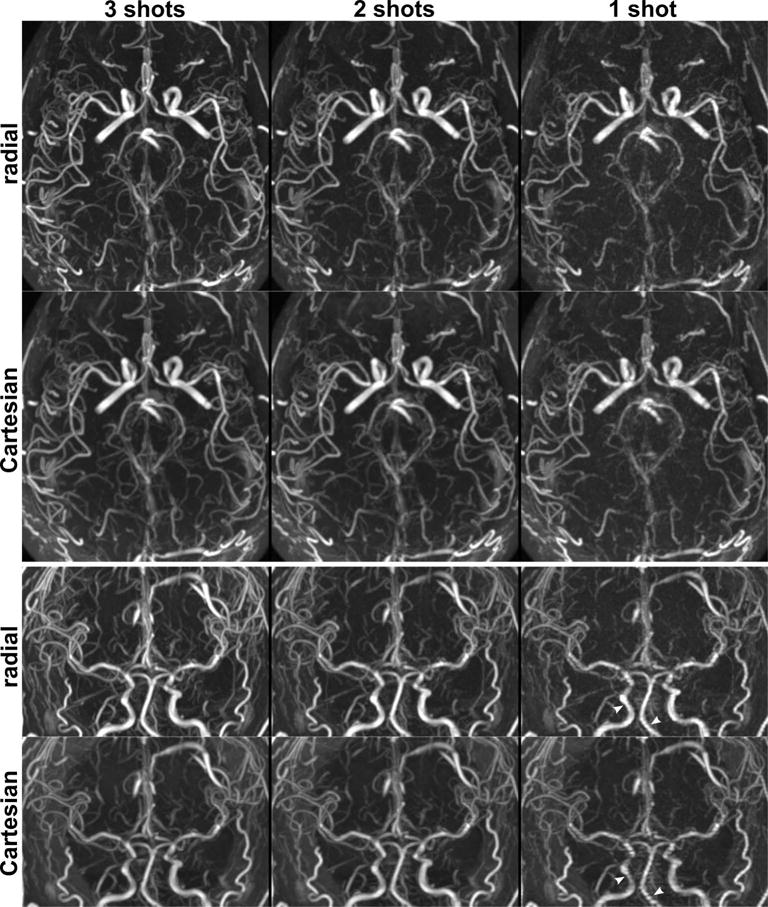Figure 3.

Impacts of the number of imaging shots and the k-space sampling trajectory on ungated super-resolution intracranial QISS MRA in a 24-year-old male. Top and bottom panels show axial and coronal maximum intensity projections. Intracranial arteries are well seen with both k-space sampling trajectories with 3-shot and 2-shot imaging (scan times of 4 min 17 s and 2 min 52 s, respectively), whereas single-shot QISS (1 min 26 s) provides lower signal-to-noise and shows arterial pulsation artifact in the internal carotid and basilar arteries, which is ameliorated with the use of radial sampling (arrowheads in coronal views).
